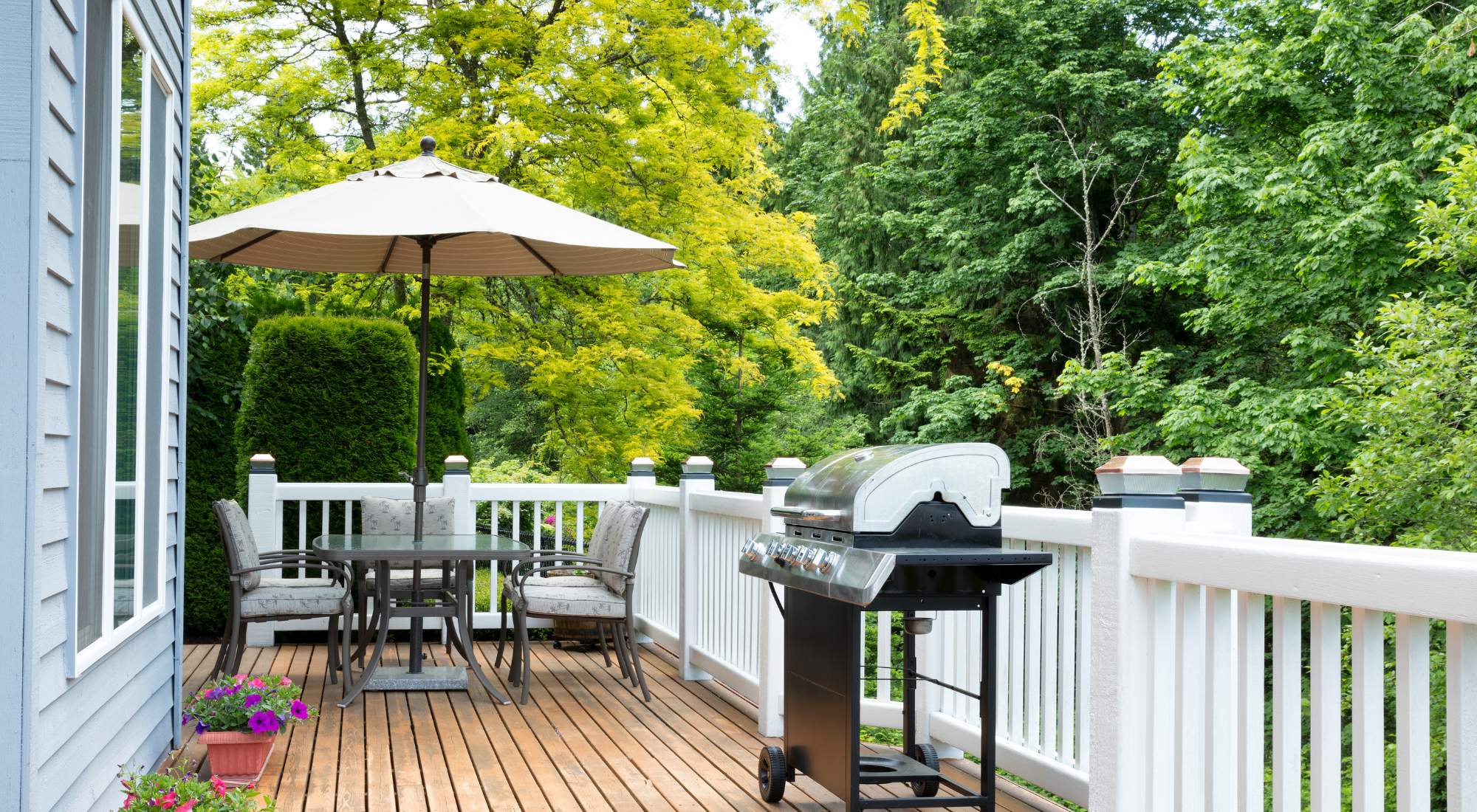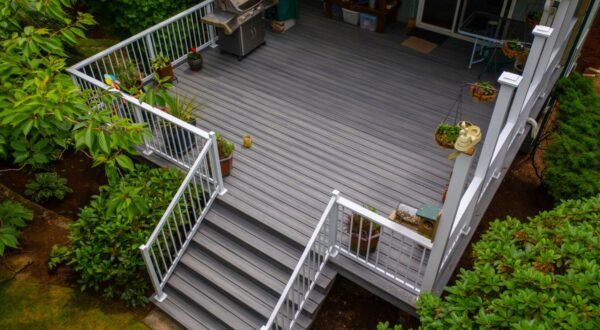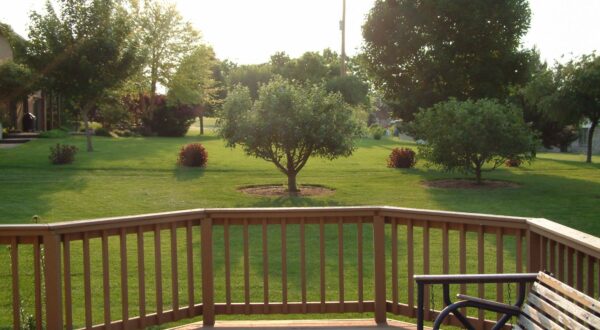How To Build a Deck Railing — Expert Advice From the Pros
September 25th, 2023 | by Jim Gates

You’re happy about the beautiful deck off the back of your house and love the additional living space it gives you in the great outdoors.
But without a deck railing, it doesn’t feel quite complete.
Decks without proper railings can not only look unfinished, but they can also pose safety issues. And that isn’t something you want for your home.
If you want to know how to build a deck railing, we can help. Keep reading to find out what railing types are most common, the materials you’ll need, and what steps you should follow to build rails on a deck.
Table of Contents
- Top 3 Deck Railing Types To Choose From
- Materials Needed To Build a Deck Railing
- How To Build a Deck Railing in 6 Steps
- 4 Tips for How To Build a Deck Rail Right the First Time
- Need To Build a Deck Railing in Oregon? Three Rivers Custom Decks Can Help

Top 3 Deck Railing Types To Choose From
Before we jump into how to build a railing on a deck, you need to first choose the best type to suit your structure. Once you’ve determined that, you can pick the infills — the products that go between the railings — that will both match your style and properly support the build.
If you aren’t sure which type of railing will work best for your deck, let the professionals at Three Rivers Custom Decks provide our expert opinions. We have been Portland’s premier custom deck builders for over 25 years, and we know what quality railing products will complement your home.
#1: Powder-Coated Aluminum & Baked-On Enamel Railing
Many of our customers choose powder-coated aluminum and baked-on enamel for their deck railing needs. These are popular because they’re both affordable and low-maintenance.
Powder-coated aluminum and baked-on enamel railings are also quite versatile because they go with a wide variety of infills, so customers can easily find a look they love.
These railings also offer many different color options and finishes to match your home decor. And if you don’t see what you need, your color can be customized by the manufacturer.
#2: Composite Railing
Another great option is composite railing. Composite materials are popular because they are long-lasting and easy to take care of. Plus, material manufacturers usually have lots of railing options to complement their decking products — which helps create a stylish and consistent look.
Two negatives of composite railings is that they’re a bit more expensive than other options and can be bulkier. But many people choose them despite this because of their durability and design options.
#3: Natural Wood Railing
Natural wood railings aren’t as popular as they used to be, but they’re a good choice if you’re on a budget. Natural wood railings are quite beautiful, but they require a lot more maintenance than composite, aluminum, or enamel.
You can also choose other more durable materials to infill the railings to help keep maintenance costs down.
Infill Selections
Now that you’ve chosen the material to use to build rails on your deck, you can select the infills to go between the framework.
Some of our most popular infill options are:
- Glass
- Cable
- Pickets
And if you don’t see any of these that you think will work with your railings, you can have custom infills fabricated to create the outdoor area of your dreams.
Materials Needed To Build a Deck Railing
Here is a general list of what you’ll need to build a railing on a deck. This list mostly applies to wooden deck railings, so if you’re using a different type, you may need other items as well
The materials and tools you’ll need may include:
- A deck railing kit or individual components such as posts, balusters, and rails
- Level
- Tape measure
- Drill or screwdriver
- Screws/nails
- Saw
- Safety goggles and gloves
- Pencil
- Post anchors
- Post caps and trim

How To Build a Deck Railing in 6 Steps
If you’d like to DIY your deck railing, here are some basic instructions on how to do it. These mostly apply to wooden deck railings, so you may have to modify the steps a bit if you’re using other materials.
And if you want to build a deck railing in ONE step, just contact Three Rivers Custom Decks. Our team of experts can design and build a beautiful deck railing that will last for many years to come.
#1: Plan and Measure
You should start by planning the layout of your railings. Figure out the height you’ll need (often around three feet) and spacing between the balusters (probably no more than four inches apart). Measure your deck’s length to see how many posts you’ll need.
#2: Install the Posts
Attach the posts to the deck structure. Depending on the design, you may need to use screws/nails or post anchors. Use a level to make sure the posts are straight.
#3: Attach the Rails
Now the top and bottom rails can be attached to the post. Install the top rail horizontally and then make the bottom rail parallel to it. Check the rails with a level and then attach them to the posts with screws/nails.
#4: Install Balusters
Next, the balusters should be positioned evenly between the top and bottom rails. You should use a tape measure and a pencil to mark out where each baluster goes, making sure the spacing meets local building codes. Then attach them to the rails with whatever fasteners are recommended.
#5: Secure the Railing Caps and Trim
To add a nice finishing touch to your deck railing, you can install post caps and trim pieces. These will protect the tops of the post from the elements while also making your railing look nicer.
#6: Final Checks
After everything is installed, double-check that the system is level and plumb. Make sure the components are securely fastened and meet all safety standards.

4 Tips on How To Build a Deck Rail Right the First Time
#1: Use Quality Material
Make sure you use the highest quality materials that you can afford. Trying to cut corners will only lead to potential problems and the need for a replacement sooner rather than later.
#2: Measure Twice, Cut Once
This should go without saying, but so many people make this costly mistake. Building a deck railing is a finicky job, so make sure you have the correct measurements before you make a bunch of bad cuts that will waste your time and money.
#3: Check Local Building Codes
Before you start, research and understand your local building codes and regulations regarding deck railings. These codes often specify height requirements, baluster spacing, and load-bearing capacity, so compliance is essential.
#4: Consult a Professional
DIY isn’t for everyone, and it can be costly when mistakes are made. If you’re unsure about any aspect of deck railing installation, it’s wise to consult a professional contractor or builder. They can provide guidance and ensure that your railing meets all safety and code requirements.
Need To Build a Deck Railing in Oregon? Three Rivers Custom Decks Can Help
Three Rivers Custom Decks creates unmatched beautiful outdoor living spaces in Portland, including the best in deck railings. With over 25 years of decking experience, we are your best option for custom decking and carpentry.
From our deck design service to the finished product, we’ll cover every detail and leave you with a stunning new outdoor space for your home.
Contact us for a no-obligation consultation today and let us build your deck railing and any other outdoor component you need.
